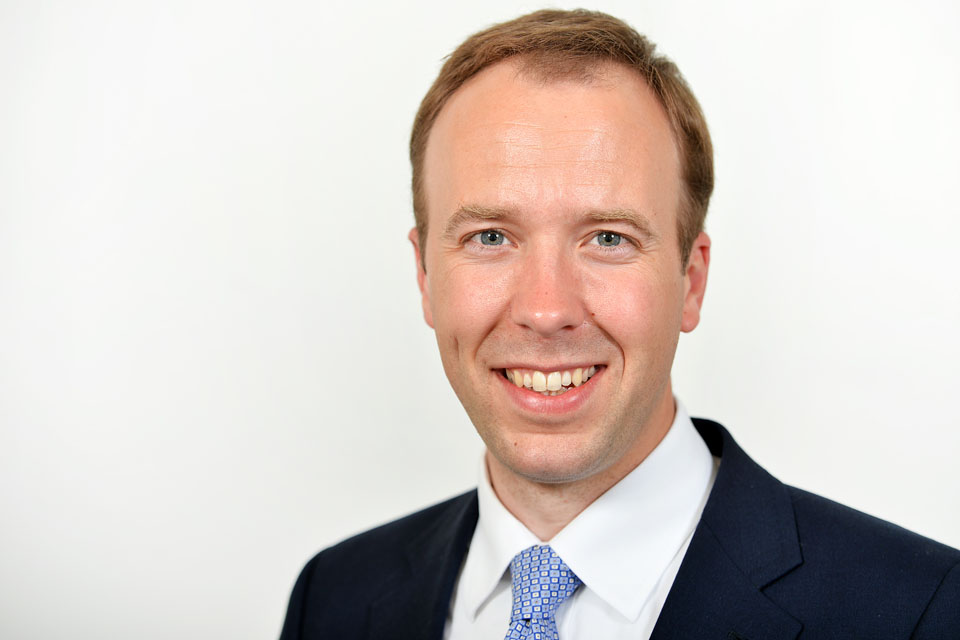Matt Hancock speaking at the Culture is Digital report launch
The speech was delivered on Wednesday 7 March.

Thanks Gabriele (Finaldi – Director National Gallery).
It’s a great pleasure to be here and see so many of you at the launch of this important report. And the next step in our exciting journey, linking the great cultural institutions of Britain and our great cultural life, with the most cutting edge, most impressive technology that there is.
I think that the wonderful view all around us shows how broad, how encompassing culture can be. Here, Venetian paintings from the 15th and 16th century are side by side with innovative digital content.
We all know from our daily lives that digital technology is breaking down silos within the cultural sector and blurring lines between disciplines in the same ways as in many other parts of the world.
Increasingly, theatre blends with film; computer programming merges with sculpture.
We have virtual reality curatorship as a crucial new skill, animated artworks and video games scored by classical music composers.
If you go to some of the video game development studios they will have fine arts students and computer engineers sitting next to each other, understanding and learning from each other about their deep talents, in order to be able to make a better representation of reality using the best of technology.
Of course art has always used the latest technology, whether it is Michelangelo investing time and money understanding and analysing the very basis of paint, or the brilliant exhibitions we’ve got in the modern day, using cutting edge virtual reality or computer programming in order to get their art to a wider audience.
In my previous role as the Minister for Digital and Culture I was very interested in this nexus.
I firmly believe, and some of you might have heard before, that Britain’s bread will be buttered at the link between cultural brilliance and technological excellence in the years to come.
And because I was the Minister for Digital and Culture and lots of people used to say to me ‘Why are you the Minister for Digital and Culture?’, I wanted to demonstrate in a very tangible way the links between the two.
That it’s about the connectivity and the content. Creating the future using the best cutting edge technology: the creativity and the technology and bringing them together.
I can’t tell you how absolutely thrilled I am to be back in charge of Digital and Culture as well as Sport as Secretary of State, and able to launch the report of this project.
The other brilliant thing about this project, which I find brilliantly exciting, is that it has been truly consultative in the very best possible way.
Helen Williams – one of the finest Civil Servants of her generation – she has led the project and not just tried to do the project herself but rather gone and found people who can add value to the project and bought them into DCMS.
Half a dozen people came to work in DCMS and I want to say thank you to each and every one of them and all the institutions who have lent people: the BBC; the Arts Council England and others.
A couple of other shout outs. I want to pay a special tribute to Jeremy Silver at the Digital Catapult, because the Digital Catapult is at the digital end of this project and understands the technology side and is a great incubator and a great place for bringing together digital and culture.
A big thank you to Darren Henley and the Arts Council England. The Arts Council holds the budget, and he has skewed the Arts Council’s budget in the direction of supporting projects that use digital technology to reach new audiences.
I think that is important because, as the National Gallery has led the country and the world in showing, you can use digital technology to reach new audiences.
There are many other shout outs that I could give. I acknowledge Tristam Hunt, the Director of the V&A museum, who has also bought this to bear.
What I hope that this report shows is just what the opportunities are. That it is a ‘how to guide’ for cultural organisations in using the very latest technology.
And it is a ‘how to guide’ for people involved in technology like Amazon and Cisco, who I can see in front of me, for how to support the nation’s cultural development.
These two worlds have so much to gain from talking to each other, engaging and supporting each other, in bringing the very best out of each other by linking the creativity with digital technology.
So a big thank you to organisations, big and small, involved in the digital project. From the National Gallery and Royal Opera House who are setting up collaborative opportunities, all the way to the Royal Shakespeare Company partnering with the BBC and the Arts and Humanities Research Council to share assets and support smaller organisations.
The future of Digital Culture is reliant on digital partnerships. It’s reliant on you in this room, going out making the case and crucially breaking down boundaries, so that we can forever be using the very best of technology to showcase the very best of British culture and British creativity. And we need to do that more now than ever.
Thanks very much.